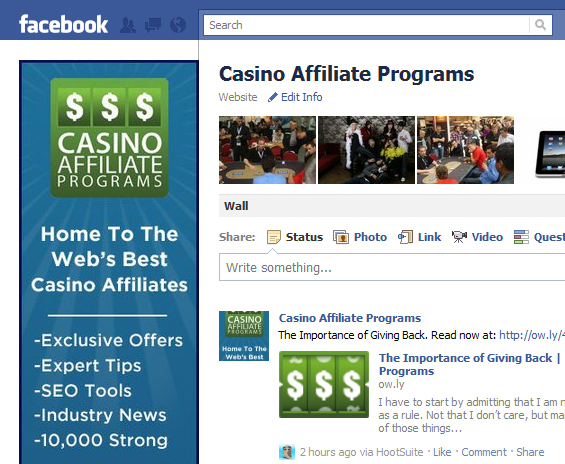Turning your website visitors into conversions — getting them to convert from casual visitors to customers of the online gaming room(s) you’re promoting — is your primary goal as an affiliate marketer. So, it’s worth your time to analyze best practices in creating those conversions, and make the best use of the traffic sources bringing you visitors in the first place.
Conversions and traffic sources
So, how do you convert visitors? There are a multitude of factors that contribute to whether or not a visitor converts. The affiliate partners you advertise, the banner ads you use, how well your content matches your ads, how well you write your blog entries, the reputation of the online casinos you’re promoting — all these factor into whether your traffic will convert or now. And that’s just on your end. Each visitor brings with him or her a whole series of preferences and background that’ll affect whether he or she will convert in unpredictable ways.
Today, we’ll discuss how to get conversions based on traffic source, based on where those visitors originally came from.
The main sources are:
Organic traffic. These are visitors who arrive at your site by the most basic of methods: Because they’ve searched for a specific word or term, found your site among the results, and clicked on your URL, bringing them to a page on your site. These visitors are the fruits of your SEO efforts.
Paid traffic. These are the visitors who arrive by clicking on an ad you’ve paid for, such as a Google AdSense ad or a banner ad on another website. In the U.S., Google AdSense doesn’t allow online gambling ads, so the paid traffic route isn’t as common to casino affiliate marketing as it is in the UK and some other parts of the world. In fact, when most affiliate marketers talk about conversions and traffic sources, they’re usually referring to varieties of paid advertising options like PPC (pay-per-click), options that are generally not open to gaming affiliates in the U.S. 
Social media. This traffic source has quickly taken hold as one of the most powerful and passionately pursued, and, well, fun. Most of your potential conversions are also active on Facebook and Twitter, and the larger your presence at those sites, the more traffic you’ll likely get (if you play your cards right).
Your email list. If you’ve taken our advice, you’ve built (or, more likely, are building) a list of email prospects you can market directly to. This is a traffic source that’s much more likely to respond positively to your offers, especially if you have a double opt-in method, meaning your prospects have twice confirmed that they want to receive your emails. With links and offers, these emails become direct traffic sources.
Links from other sites. If you’ve made a name for yourself (or tried to) throughout the Internet on whatever your specific topic of expertise, you’ve had the chance to insert your URL into the signature of all your third-party articles, blog comments, and all the other methods of backlinking out there. This is targeted linking, more targeted even than most social media efforts, in that the sites and content you link to are typically interested in the same topics as your own site. Traffic that arrives via this route, then, will be more likely to convert.
So, how do you decide which of these works best? Generally, the “warmer” of these options will convert better — meaning, the better relationship you have with them, the more likely they’ll be to become a conversion. So, social media converts better than paid advertising, because those visitors already have a relationship with you, slight as it may be.
Beyond that, there are three important steps you can take to get better conversions based on any of these sources of traffic:
1. Analytic performance. Monitor your site’s performance on Google Analytics to see where traffic is coming from.
2. Direct your traffic. Once you’ve seen where most of your traffic comes from, you can tweak those channels to direct certain visitors to certain pages. For example, if you’re getting 40 percent of your traffic through an organic SEO term, you can better engineer that page for organic visitors — i.e., tailor the ads and content on the page to better suit, very specifically, the search term being used to direct the visitor to your page. That means what your visitors see will better match what they want to see, and they’ll be more likely to convert.
3. Tweak your landing pages. Or, taking it further, you can create special landing pages for specific traffic arrivals. If 20 percent of your traffic comes from a social media group, for example, you know exactly what those visitors are interested in, and can prepare your welcome accordingly.
In conclusion …
So, building improved conversions on your pages is a matter of formula — testing and monitoring, looking at your information and adjusting your content and ad practices where possible to get the right message in front of the right visitors.
This conclusion may frustrate someone who’s looking for concrete, statistically proven conversion-increasing methods. But the reality is, only you can provide that. Every site will perform differently based on your many unique factors — keywords, niche, content style, etc. — and so the only way to know what’s working is to watch your own site and learn from your own visitors.
If you can successfully do that, you’ll greatly improve your affiliate marketing plan, better matching the various online gaming rooms you promote with the type of people likely to play there.